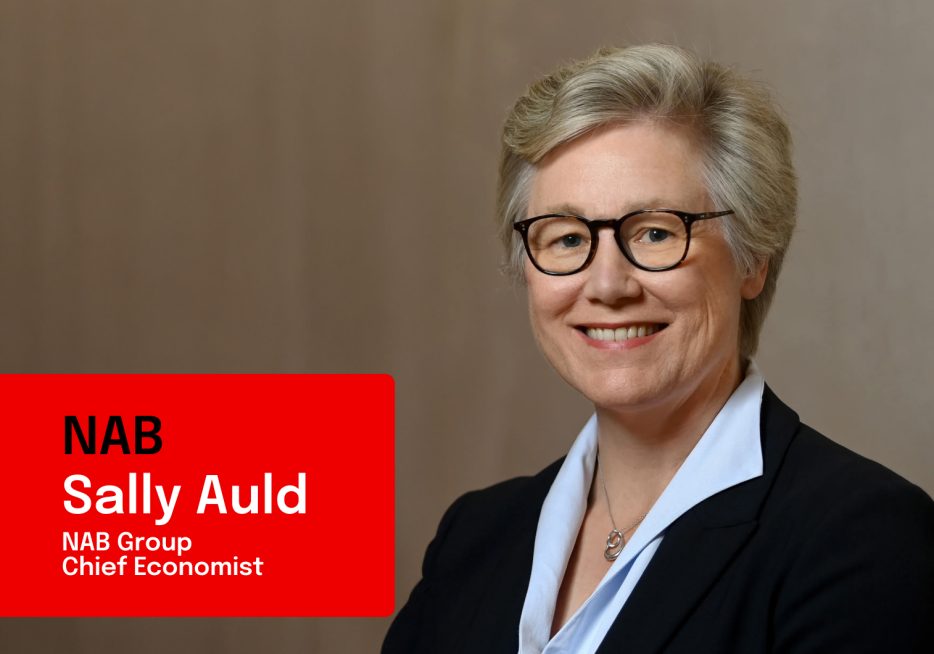We hear from NAB Group Chief Economist, as she shares her latest economic update. Watch now.


NAB recently hosted a breakfast to share insights from the NAB Charitable Giving Index report. Panellists discuss the impact of the economy on giving, giving trends, and how charities are leveraging data and digital channels.

On May 26, NAB hosted a breakfast to share insights from the annual NAB Charitable Giving Index report. Panellists from NAB, Australian Red Cross and Everyday Hero discussed the impact of the economy on giving, giving trends, and how charities are leveraging data and digital channels.
Context is crucial. This was one of the key insights at NAB’s Charitable Giving breakfast event on May 26, which opened with an overview of how the economy is faring. Given the link between the macro economy and giving, it’s important to understand what’s ahead. Change was a key theme of the overview, presented by NAB’s Head of Industry Economics, Dean Pearson. Pearson describes our current position as “one where the non-mining sector is struggling to offset the impact of sharply lower mining investment.” While that’s not to say that non-mining sectors aren’t performing better – housing, retail, tourism and manufacturing are showing positive signs – there is still low consumer confidence.
With approximately 60 percent of our economy dependent on consumer spending, the economy will ultimately be held back until confidence levels return. Much of the reason for the low confidence is due to unemployment levels and anxiety. Countering the glowing reports of Australia in various liveability indexes, NAB’s Wellness Index paints a more sobering picture. Pearson says 17 percent of Australians claim to have low levels of life satisfaction. At the root of this, is a very specific concern for the cost of living and concern about the ability to afford retirement.
Notes Pearson: “Spending is increasingly dominated by essentials such as utilities, transport and medical services. The sad part for the charitable sector is that one of the areas [Australians] are cutting back on is charitable giving.” Giving to charity grew by only 2 percent over the year to February 2015, down from 10 percent last year. On the positive side, the over-65 age group has seen positive growth in giving across all charity categories. Notably, women in this age group are also the happiest, according to the Wellness Index.
The Federal Budget was a topic of great interest to charities Australia-wide. With international aid levels being cut, there was some initial fear funding could be very problematic. However, overall response to the Budget from charities represented was generally optimistic. Kate Burtt, Senior Donor Development Executive from Australian Red Cross, did not think it would impact regular giving, while John O’Donnell, Managing Director of Everyday Hero, believes that there will be an upturn this year. “I was encouraged by the investment in small business and childcare. So I think we will actually see anxiety reduce with working Australian families.” Tim Hardy, Associate Director for NAB Government, Education & Community Business, points out that if we look at the correlation between giving and consumer sentiment, there is room for improvement within the year.
As always, a key priority for charities will be diversifying their funding channels and using their data to drive new giving opportunities. And according to the panel, great progress is being made. Data is the key starting point – developing deep and accurate databases is a primary focus for many Australian charities and they have broadly been doing a good job of collecting data; now they’re seeking more intelligent ways to interpret this data. As O’Donnell explains, one of the areas Everyday Hero is trying to move into is behavioural understanding. Burtt echoes the value of this information: “It’s incredibly important to us as well, to be able to tweak and understand our own processes.” Knowing what day of the week someone prefers to be contacted can mean the difference between receiving a donation or not.
The use of digital technologies has led to some fantastic results for charities, and there is much enthusiasm to pursue more avenues. Red Cross has been selected as one of 15 charities that will be part of a pilot program, in partnership with a coalition of telcos, to use SMS as a way of receiving donations – a channel that has proven very successful in other countries over the last 10 years. Burtt cites the success of Red Cross partnerships with iTunes and Facebook as platforms to receive donations. For charities to truly maximise the opportunity from digital channels, O’Donnell believes that the challenge is not with consumers, but with educating boards on the value of the investment required.
Corporate philanthropy has matured greatly over the last several years, and involves much more than large cash gifts from decision makers at the top. O’Donnell describes an increasing devolution of power to the employment base, where employees can choose where funds for charity are directed. Hardy adds that corporate philanthropy is also about “leveraging and working relationships within corporations to get what you can.” This might include a professional skilled volunteering database, or gifts in kind. He also notes that charities sometimes make the mistake of coming in the door with a clear idea of their own vision, but then fail to ask partners what they are trying to achieve as a business. He suggests that not for profits focus on looking at private businesses that are driven by the passion and values of their founders and those who share a similar vision.
For more information, talk to your NAB Relationship Manager or email community@nab.com.au
More from NAB:
© National Australia Bank Limited. ABN 12 004 044 937 AFSL and Australian Credit Licence 230686.